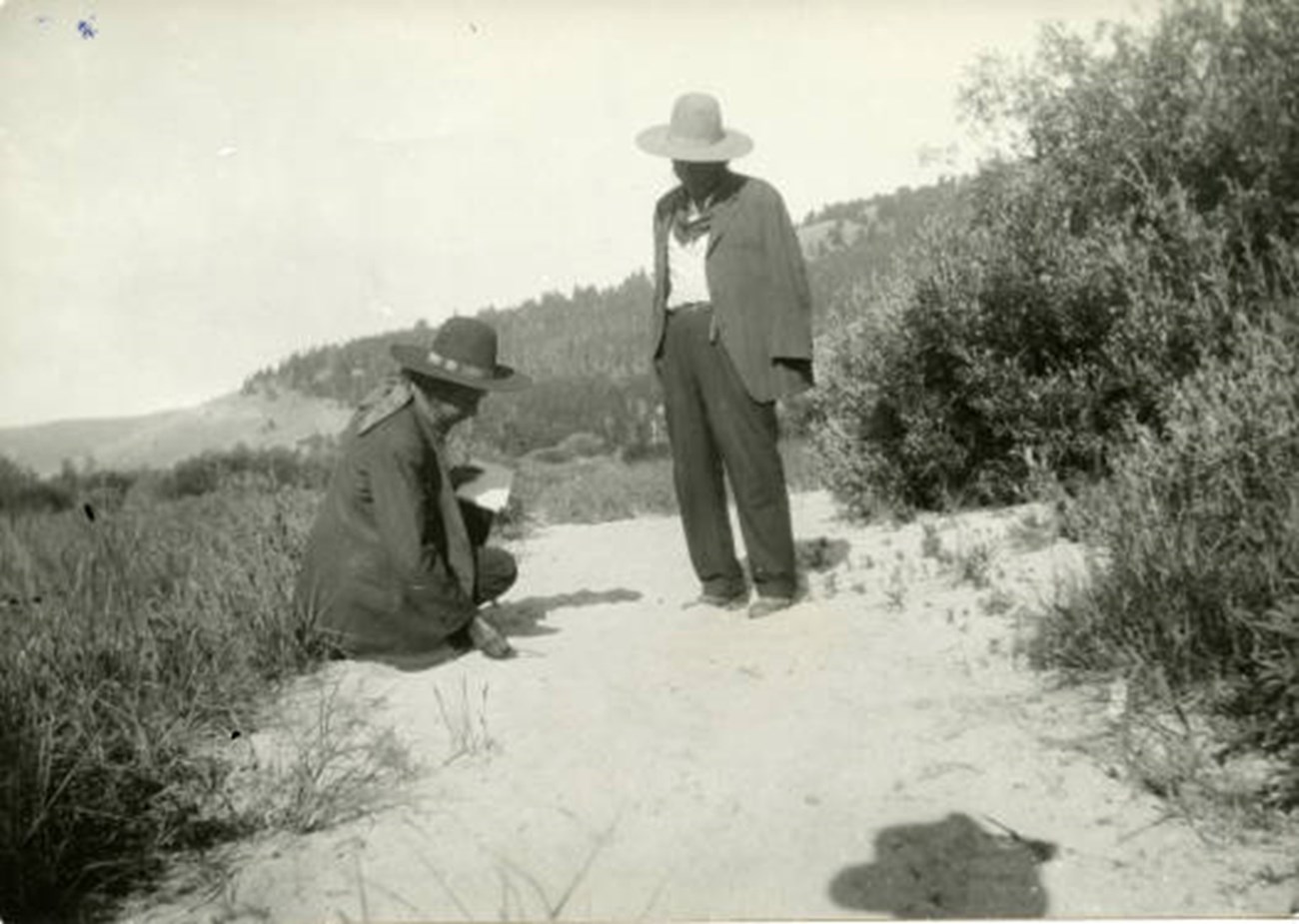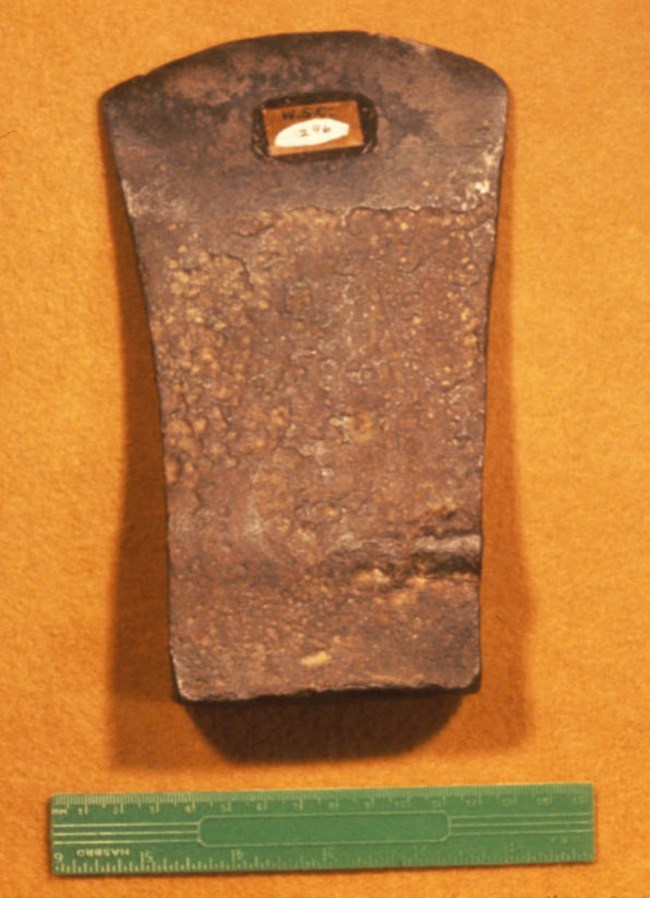Last updated: July 18, 2024
Article
Retracing Fighters’ Steps at the Battle of the Big Hole

One of these deadly encounters occurred at what is now Big Hole National Battlefield in southwestern Montana. The Battle of the Big Hole is exceptionally well-documented due to testimonies from soldiers, civilians, and nimíipuu witnesses. The recounts of Yellow Wolf and other nimíipuu informants tell of the shock of the attack and the fury with which warriors fought for the lives of women, children, and each other. However, individuals are rarely privy to an entire fight, and memories are not always reliable. Archeological research at the battle site illuminates the decisions, actions, and reactions of the two forces that culminated in the nimíipuu’s bittersweet victory.
An Overview of the Case
On August 9, 1877, midway through the five-month conflict with the nimíipuu, the 7th US Infantry led by Lt. Colonel John Gibbon launched a pre-dawn attack on the nimíipuu camping on the banks of the north fork of the Big Hole River. The first shot killed Natalekin, an older nimíipuu man who was checking on horses pastured on the hillside above the encampment. As they charged, some soldiers shot into the encampment’s shelters and deliberately burned tipis. Though initially disoriented, within an hour the nimíipuu regrouped and repelled the soldiers. They besieged Gibbon’s men until the evening of August 10, at which point the remaining warriors dispersed to join those who had already fled.Ambiguities remain regarding how these events unfolded. A major contributor is regular pot hunting that occurred after the battle and into the mid-1900s, resulting in the removal of many artifacts from the site. Sporadic attempts at inventorying battle-related artifacts started in the 1950s, but only in 1991 and 1994 did extensive surveys try to resolve debates over combatants’ behavior and the battle’s order of events.
Three types of recovered buttons—general service brass buttons, trouser fly and suspender buttons, and civilian style buttons—reflect Infantry soldiers’ regulated manner of dress. The presence of two hooks from hook and eye assemblies divulge the soldiers’ less obedient side, since not all the men complied with Colonel Gibbon’s order to cache all unnecessary equipment with the wagon train.
Thirteen brass rings were recovered, seven from the Siege Area and six in the encampment. It is possible that the early attack forced nimíipuu men and women to abandon their jewelry, most of which they would have taken off at night. Infantry soldiers also left behind personal items, including artifacts like pocketknife fragments, harmonica reed fragments, and a five-cent piece.

Reconstructing Their Routes
Archeology can articulate where the historical record falls short. At Big Hole, artifact concentrations and their distributions give shape to the positions and routes of both US Army and nimíipuu fighters. These can then be used to verify—or correct—the different historical accounts of the battle.
The encampment area east of the river yielded a minimum number of 58 individual guns, a portion of which show movement from the encampment to the Siege Area as Colonel Gibbon and his force retreated from the nimíipuu warriors’ heavy fire. Although retreat was a recognized military maneuver, the intermingling of cartridge cases indicates the 7th US Infantry’s organization broke down once they entered the dense willows. At least one skilled nimíipuu marksman was likely responsible for harassing the retreating soldiers, which the bullet patterning around a location known as the Twin Trees supports.

Gibbon’s soldiers were demoralized, but they were not entirely without aid. Contrary to the assumption that the Infantry’s reserves were all sent into the fray, the trail area north of the Siege Area yielded cartridge cases and loaded cartridges. A small group of men likely moved down the trail, firing at even intervals to support their companions. A six-person crew of enlisted men and two civilians guided a 12-lb. Mountain Howitzer mounted on a mule-drawn carriage, arriving in the late morning of August 9. They fired just two rounds before a group of nimíipuu overtook them, which is confirmed by the nimíipuu cases and bullets found surrounding the soldiers’ ammunition. The nimíipuu then disassembled the Howitzer’s carriage and scattered its parts. To this day, the event serves as the inspiration for the nimíipuu song and dance known as “Duck and Dive.”
Grieving nimíipuu families returned to the encampment in the afternoon to mourn and bury their dead. After subduing the Army soldiers the next day, the shaken nimíipuu continued their trek south into Idaho. For the surviving soldiers, reinforcements arrived quickly on August 11, though they solemnly departed with 29 fatalities, including those of civilian volunteers. The nimíipuu, despite winning the day, lost between 60 to 90 lives, at least two thirds of which were women and children. The actual total count of nimíipuu wounded and killed is still unknown, but there is no doubt of the devastation to both sides.
Reconciling the Past and Present
Just as the activities of nimíipuu fighters and Infantry soldiers often overlapped at the battle site, more recent artifacts are often mixed in with ones from earlier periods. At Big Hole, among these intruders are a fiddleblack style iron spoon that is likely associated with picnicking, a mid-1900s barrette in a floral design, and 20th-century coins that were undoubtedly dropped by park visitors or staff. This motley collection comes from the recreational and residential post-battle uses of the battlefield. For example, a US Forest Service barn and a museum building sat atop the Siege Area site, in addition to multiple picnic sites in or adjacent to it. A homestead found in the willows area west of the river and a blacksmith shop in part of the southern camp area also likely interfered with artifact patterns at Big Hole.
Sources
Beal, Merrill D. A History of the Nez Perce Campaign 1877.Cultural Landscapes Inventory, Big Hole National Battlefield, 2008. National Park Service.
Howitzer Capture Site. National Park Service.
McWhorter, Lucullus V. Yellow Wolf: His Own Story, 1940. Caxton Press.
Scott, Douglas D. A Sharp Little Affair: The Archeology of the Big Hole Battlefield. Reprints in Anthropology, vol. 45, 1994, revised June 2009.
The Flight of 1877. National Park Service.
